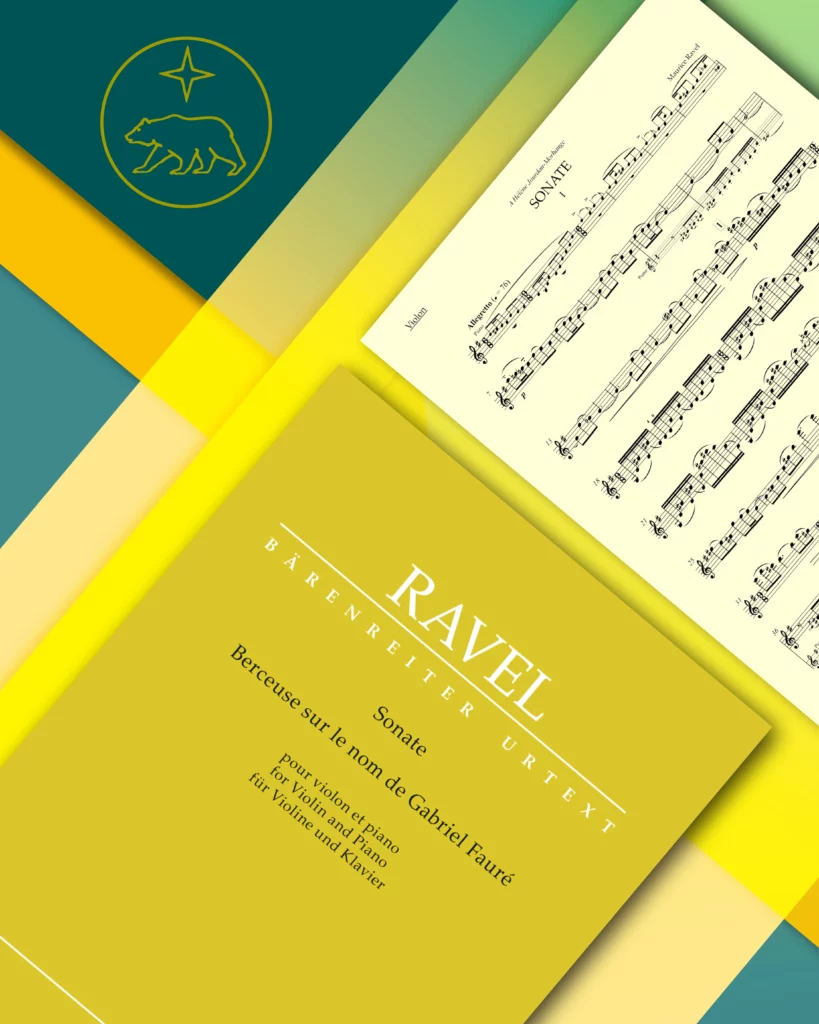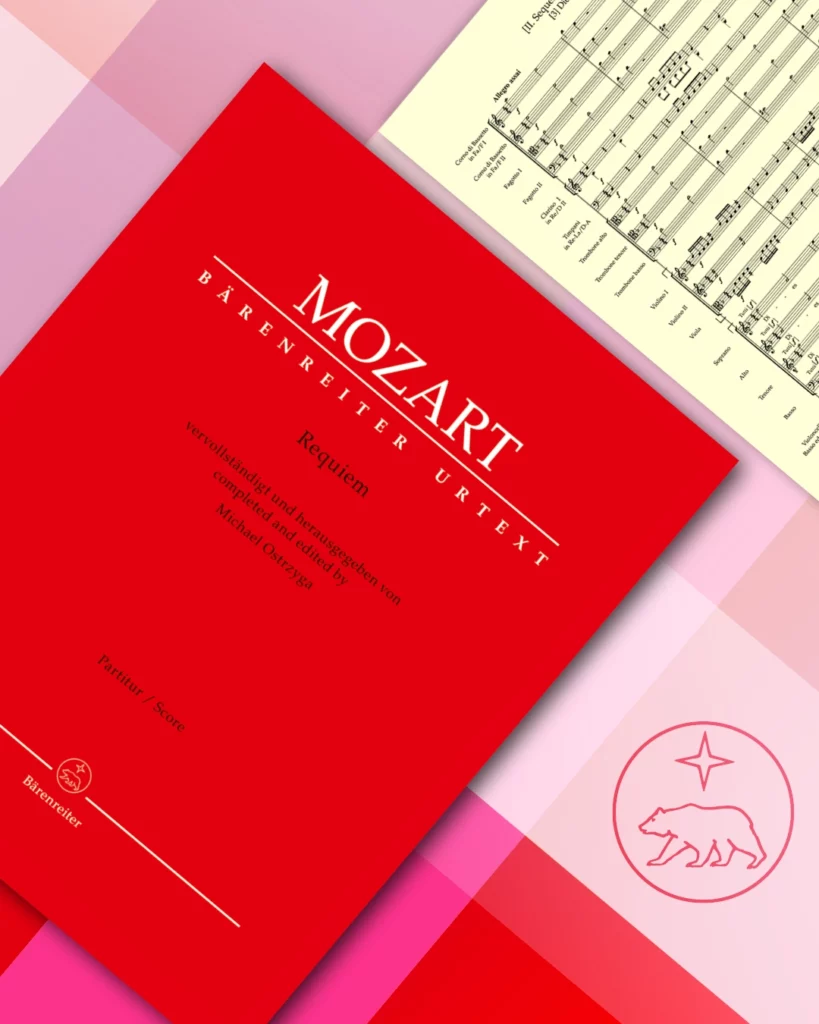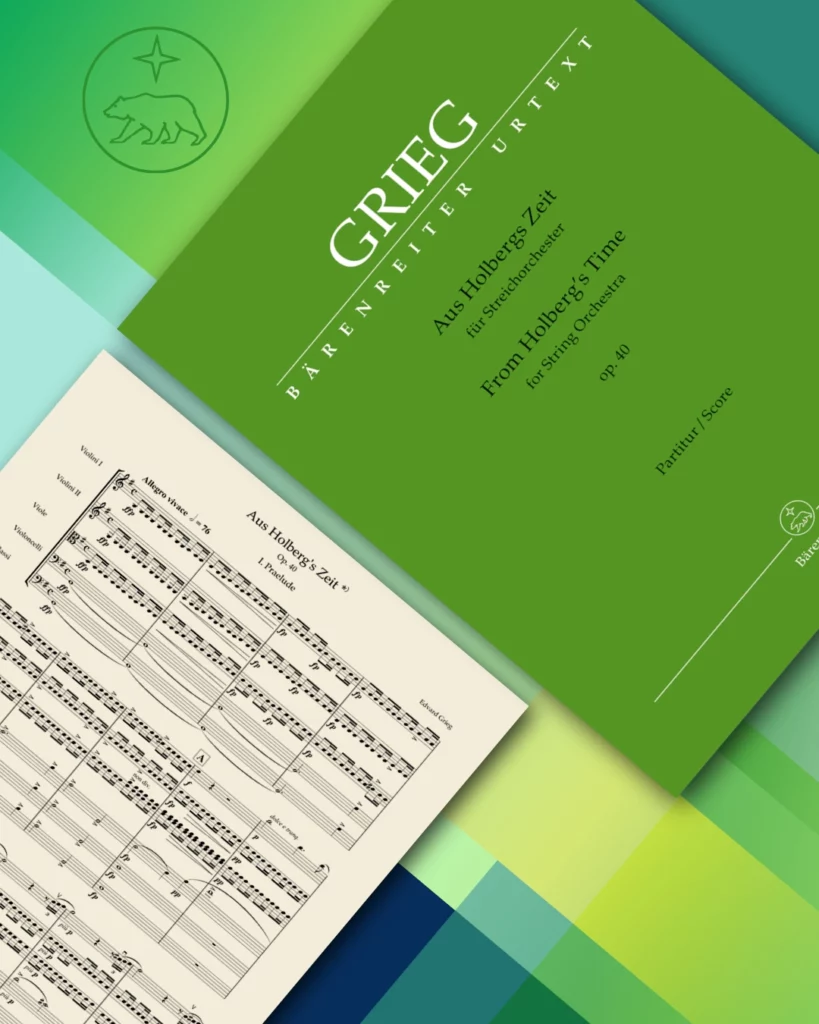"With great music, no stone is left unturned"
Bärenreiter Urtext: on the trail of the composer
Bärenreiter is a pioneer of scholarly-critical editions of sheet music, having published complete editions and editions of individual works by major composers since the 1950s. While a significant proportion of “Bärenreiter Urtext” editions are based on the musical text of these large-scale publications – as is the case for the practical editions of works by Bach, Handel, Gluck, Mozart, Schubert, Berlioz, Fauré and Saint-Saëns – Bärenreiter also publishes a large number of independent Urtext editions. Of these, the editions of Beethoven’s symphonies and piano sonatas (Jonathan Del Mar), Mendelssohn’s overtures (Christopher Hogwood), Ravel’s Concerto for the Left Hand, Debussy’s “Three Symphonic Sketches” La Mer (Douglas Woodfull-Harris), and Brahms’ Violin Concerto (Clive Brown) are worthy of particular note.
As far as we know, the term “Urtext” was first used in reference to editions of sheet music in the series “Urtext classischer Musikwerke” (“Original text of classical works of music”) published by Breitkopf & Härtel between 1895 and 1899, edited by the Akademie der Künste Berlin with piano works by Johann Sebastian and Carl Philipp Emanuel Bach, Mozart, Beethoven, and Chopin. However, it was not until the mid-20th century that the term – which, incidentally, has no fixed definition and is not protected – gradually became established. The “Bärenreiter Urtext” brand is internationally synonymous with critical editions of sheet music for practising musicians, edited by renowned music researchers and performers on the basis of all available sources and incorporating the latest findings. Editorial decisions and readings are documented in a Critical Commentary – the heart of every Urtext edition –, which also includes a detailed description of the sources. The analysis will focus not only on the often extensive body of sources, ranging from first sketches to autograph corrections made to the already printed work and possibly also including sound recordings by the composer, but also on secondary sources such as student copies, letters, and comments by contemporaries. The key editorial principle is to approximate the composer’s intention as closely as possible, while keeping editorial interventions to a minimum.



This may sound simple at first glance, but already poses a fundamental challenge. If, for example, there are several different autographs or authorised copies that served as models for the engraving of different original editions printed in parallel, this complicates the question of the composer’s intention, especially if one assumes that the work was intended to have a particular form. Chopin or Liszt are not the only composers whose works elude such fixed conceptions. The idea of the “Urtext”, that is, the wording of the musical text actually intended by the composer, is closely intertwined with the concept of the individual work. Against this background, the question of “wrong” or “right” to a certain extent becomes relative. The new edition of Mozart’s popular Sonata in A major, K. 331 (“Alla Turca”), rendered necessary by the discovery of new sources, thus actually contains two versions of the sonata: that of the first print and, for the first time, the reconstruction of its autograph transmission. Both versions are presented as equally valid and important. A further publication presenting two different versions of a prominent work is the new Urtext edition of Beethoven’s Bagatelle in A minor WoO 59 (“For Elise”), which represents the deviations of the revisions made to the second version visually in grey.
Editors find themselves confronted with many and varied questions. Contrary to what the prefix “Ur-” suggests, “Urtext” is not in fact synonymous with the first autograph record of the work: “Often a composer thinks ahead, he changes his mind, but the manuscript is already at the printer’s. […] If we then look at the first print, we find something quite different to what is in the manuscript, which quite certainly points to the final changes in the galley proof.” (Jonathan Del Mar) Establishing the source filiation is crucial; in the absence of dates in the sources, textual dependencies can provide important clues. Is the text, are the performance-related details it communicates complete? If certain information is not present in the written material identified as the main source, is it in keeping with the composer’s intention to take this information from one or several other (authorised) source(s) to supplement or correct the main source, thus producing a musical text that is source-based but for which there is no historical evidence? Should parallel passages that are notated differently in the source be aligned? Quite frequently, the notation is deliberately ambiguous, as in Scriabin’s early Sonata in E-flat minor (mm. 4, 10, etc.), where the composer appears to have forgotten to dot the notes when notating the rhythm. Bach’s autograph of the Mass in B minor shows just how much effort is sometimes necessary to trace a work’s “Urtext”. An X-ray fluorescence analysis of the ink made it possible to distinguish corrections, additions, and changes made by C. Ph. E. Bach from his father’s writing and to flag these in the edition. Additional information from the “Dresden Parts” of 1733, most of which were written by Bach himself, was highlighted in grey and thus differentiated typographically from the text of the autograph.

Music is an ephemeral art. When a composer releases a work from the privacy of his or her studio into the public sphere, it takes on an independent life in its own right. A composition is created anew with every performance, and sometimes performances diverge to such an extent that one thinks one is hearing two different works, even though they are based on the same musical text. Unlike literature, poetry, painting, and visual art, notation represents merely a part of the musical work of art. What is scarcely written down, or not at all, are the music-making conventions of the time. If the performance practices of one epoch adapt to the changed stylistic sensibilities of a subsequent era, traditions are broken, making it more difficult to access the earlier repertoire. Over the course of the 19th century, the market was flooded with editions of sheet music that contained numerous unmarked changes, additions, or “improvements” that sought to provide practical aids for playing for their own respective time. Besides these, influential “instructive” editions of works by great composers of the classical canon appeared in print, such as the editions of Beethoven’s piano sonatas by Hans von Bülow and Arthur Schnabel or Clara Schumann’s edition of the piano works of her husband Robert. As written precursors of sound recordings, they aimed to set down exemplary interpretations both for a contemporary audience and for posterity, becoming historical documents in their own turn, such as Mendelssohn’s arrangement of Bach’s St. Matthew Passion, which is available as a “Bärenreiter Urtext” edition.
As a counter-reaction (not least under the influence of New Objectivity), from the late 19th century onwards demand arose for musical texts purged of extraneous ingredients, with not a few even excluding editorial – and thus interpretive – fingerings. Guidance for playing, such as that contained in the instructive editions, was dismissed wholesale, its historical significance not recognised, which effectively helped to seal the discrediting of creative virtuosity. The notational essence, the expurgated “Urtext”, conquered performers’ music stands. Unconditional fidelity to the text, which frequently produced clinically sterile playing at a metronomically precise tempo, became the ideal. However, musicians soon came to realise that in order to decode the “Urtext” thus produced, they needed instructions – as Hugo Riemann had urgently warned against in 1894: “This is not meant to put the case for so-called ‘historically faithful’ concerts, which spurn the pianoforte and want the clavicembalo to be set in its place – as honourable as these efforts are, they must be rejected because of their consequences (otherwise Bach’s Well-Tempered Clavier would also have to be played on the clavicembalo or even clavichord!).”
The further removed a composition is from the performer’s own present, the greater the need is and always has been for additional information if the performer is to grasp all dimensions of a given work. In this regard, “Bärenreiter Urtext” truly excel. In addition to introductory texts on the work and the sources, they provide information by specialists on the performance conventions of the time, such as ornamentation, pedal use, articulation, tempo and tempo modification, as well as on playing techniques idiosyncratic to the composer, including rubato, cantilena (non-notated internal melody), and legatissimo – Chopin is a prime example – as well as on the instruments used and instrumentation variants. Examples include the new Urtext editions of Haydn’s late piano sonatas (Rebecca Maurer), piano works by Chopin (Hardy Rittner) and Schubert, here especially on the interpretation of Schubert’s accent markings (Mario Aschauer), François Couperin’s Pièces de clavecin (Denis Herlin) and Mozart’s piano works for four hands with suggestions for the execution of fermatas and entries (Michael Töpel). The Urtext edition of Brahms’ violin sonatas (C. Brown) contains extensive explanations of historical performance practice. The edition of Beethoven’s Romance op. 50 (J. Del Mar), the autograph of which contains only scant information on articulation and dynamics, offers a different solution. For the very first time, it reproduces Beethoven’s authentic musical text without the multitude of unmarked editorial additions, and furthermore provides an edition of the work supplemented with aids for practical performance based on other works by Beethoven from the same period. The Urtext edition of Mendelssohn’s Concerto for Violin and Orchestra op. 64 (R Larry Todd / C. Brown) presents the work in two versions based on newly discovered sources, and also includes a separate booklet on performance practices in the Concerto and Mendelssohn’s chamber music for strings. For Brahms’ chamber music, too, there is a supplementary booklet with notes on performance practice by Clive Brown.
Why does Bärenreiter keep producing new Urtext editions? “The absurd objection that different editorial decisions can barely be heard in performances, if at all, unless audience members have prior knowledge and are listening out for them, basically refutes itself. Nothing is trivial where great music is concerned; even the confirmation of already known facts is significant” (Peter Gülke). Research is in constant progress, and with it the view of the music changes and develops, too – much like new recordings of works that have already been recorded previously. This can influence the interpretation of ambiguous passages, spelling or engraving errors, and intended deviations, for editing always also means interpreting the sources in a manner that is committed to the spirit of the times and the current state of knowledge. However, the most important incentive for new Urtext editions undoubtedly is the discovery of new sources. Jonáš Hájek, for example, recently discovered the second authorised copy of Dvořák’s Nocturne in B major, op. 40 – which served as the model for the first print – in private ownership and was thus able to bring to light the original text of the version for string orchestra.
While “Bärenreiter Urtext” editions set high standards with regard to their content, they also seek to ensure ease of use. They are expressly aimed at musical practitioners. Professional performers, educators, students, pupils and music lovers alike are provided with a reliable musical text, supplemented with an abundance of information about the work and its performance. Particular emphasis is placed on excellent print quality and workmanship, as well as reader-friendly music engraving on high-quality tinted paper, which allows even complex structures to be easily grasped. Needless to say, page turns are placed for practicality, and if it is not possible to turn the page, then fold-out pages ensure that playing can continue without interruption. “Bärenreiter Urtext” editions’ wealth of features is designed to provide musicians with the best possible conditions for enjoyable and fulfilling music-making.
Britta Schilling-Wang